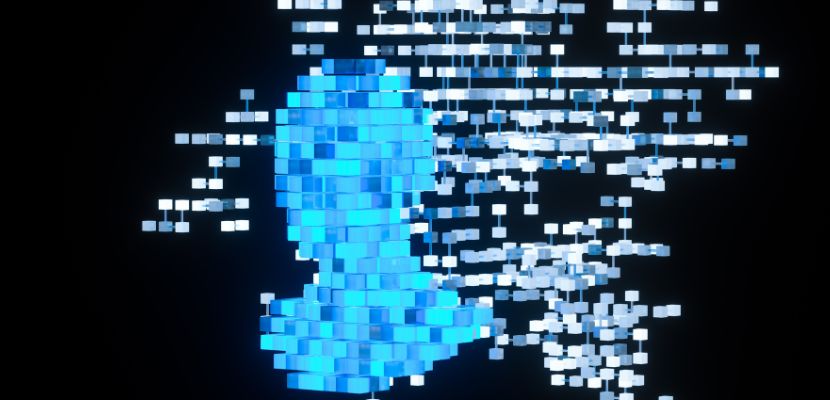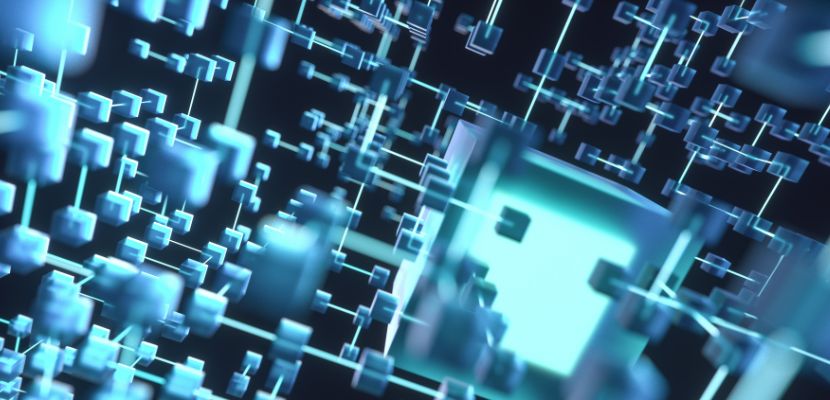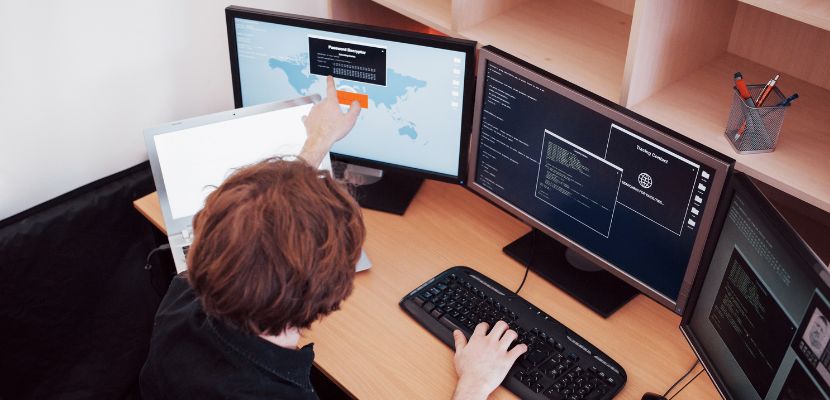End user computing (EUC) encompasses the tools, technologies, and systems that empower employees to perform their work efficiently and securely. This includes everything from desktops, laptops, and mobile devices to virtual desktops and cloud-based solutions, ensuring seamless access to applications and data.

What Is End User Computing?
End user computing (EUC) refers to the comprehensive framework of technologies, processes, and tools designed to deliver and manage the computing environments that individuals use to perform their daily tasks. It encompasses the hardware, software, and infrastructure required to provide seamless access to applications, data, and services, regardless of the user's location or device.
EUC solutions focus on creating a productive and flexible user experience while balancing the need for security, scalability, and centralized control. By integrating elements such as virtual desktop infrastructures (VDI), cloud-based workspaces, and mobile device management (MDM), EUC aims to ensure that users have consistent, secure, and efficient access to the resources they need to collaborate and perform effectively in diverse working environments.
How Does EUC Work?
End user computing works by combining hardware, software, and management frameworks to provide users with secure and efficient access to applications, data, and systems needed for their tasks. At its core, EUC relies on infrastructure and technologies that deliver a seamless user experience while maintaining centralized control for IT teams.
It typically involves deploying solutions like virtual desktops, mobile device management (MDM), and application delivery platforms. For instance, virtual desktop infrastructure (VDI) hosts user desktops on centralized servers, allowing users to access their workspace from any device with an internet connection. Similarly, cloud-based workspaces enable users to securely interact with applications and data stored in the cloud, eliminating dependency on local hardware.
EUC solutions also integrate management and security tools to protect sensitive data and ensure compliance. IT administrators can remotely monitor, manage, and update devices, enforce security policies, and respond to potential threats in real time. This approach ensures that users have a consistent and secure experience across devices and locations while reducing operational complexity for the organization.
What Are the Types of End User Computing?
The types of end user computing can be broadly categorized based on the technologies and approaches used to deliver computing resources and enable user productivity. These include:
- Traditional desktop computing. Refers to the use of physical devices like desktops and laptops that run locally installed operating systems and applications. This is the most conventional form of EUC, relying on local hardware resources.
- Virtual desktop infrastructure (VDI). A centralized approach where virtual desktops are hosted on a central server, enabling users to access their desktop environment remotely from any compatible device. This enhances flexibility, scalability, and security.
- Desktop-as-a-Service (DaaS). Similar to VDI but delivered as a cloud-based service. DaaS allows organizations to provide virtual desktops to users without maintaining on-premises infrastructure, making it a cost-effective and scalable solution.
- Application virtualization. Focuses on delivering individual applications, rather than entire desktops, to users. Applications are executed on central servers but appear and function as if running locally on the user's device.
- Mobile device computing. Enables users to access applications and data via smartphones and tablets, often managed through mobile device management (MDM) or enterprise mobility management (EMM) solutions. This ensures secure and controlled access for mobile users.
- Cloud-based EUC. Involves leveraging cloud platforms to deliver desktops, applications, and data. It supports a hybrid workforce by providing users with access to their resources from any location with internet connectivity.
- Remote desktop services (RDS). Provides remote access to a centralized desktop or application hosted on a server. This is commonly used for specific tasks or applications requiring centralized management.
End User Computing Examples

EUC examples highlight the diverse technologies and approaches that empower end users to access resources, collaborate, and perform tasks efficiently. These solutions cater to varying needs, from traditional setups to modern cloud-based environments, ensuring flexibility and productivity across industries. Below are some key examples explained:
- Virtual desktop infrastructure (VDI). VDI hosts users' desktops on centralized servers, allowing access to a consistent desktop environment from any device. This improves data security, simplifies IT management, and supports remote work by centralizing resource delivery.
- Desktop-as-a-Service (DaaS). DaaS provides virtual desktops as a subscription service from the cloud. It eliminates the need for on-premises infrastructure, making it cost-effective and scalable for businesses of all sizes, especially for remote or temporary workforce setups.
- Application virtualization. This technology delivers specific applications to users without requiring local installation. Applications run on centralized servers and are streamed to the user’s device, ensuring compatibility, security, and ease of updates.
- Mobile device management (MDM). MDM solutions manage and secure mobile devices used for work, enabling employees to access corporate data and applications securely. This is critical for organizations with a mobile workforce or bring-your-own-device (BYOD) policies.
- Cloud workspaces. Cloud-based EUC solutions provide users with access to their desktops, applications, and files from any device through a browser or client software. This ensures flexibility, especially for hybrid or remote teams, by storing resources securely in the cloud.
- Remote desktop services (RDS). RDS enables remote access to desktops or applications hosted on a central server. It’s a practical solution for users who need specific tools or software that may not be compatible with their local devices.
- Thin clients. Thin clients are lightweight computing devices that rely on a central server for processing power and storage. They are commonly used in environments where security and cost-efficiency are priorities, such as healthcare or education.
End User Computing Use Cases
EUC use cases demonstrate how organizations leverage EUC technologies to address specific business needs, enhance productivity, and ensure secure access to resources. Here are key use cases explained:
- Remote work enablement. EUC solutions like virtual desktop infrastructure (VDI), Desktop-as-a-Service (DaaS), and cloud workspaces allow employees to securely access their work environments from any location. This supports remote and hybrid work models by providing seamless access to applications and data while maintaining IT control.
- BYOD (Bring Your Own Device). Organizations implementing BYOD policies rely on EUC tools such as mobile device management (MDM) to secure employee-owned devices. These solutions enable access to corporate resources while ensuring data security and compliance with organizational policies.
- Disaster recovery and business continuity. EUC technologies ensure business continuity by providing employees with uninterrupted access to their work environments during disasters or system failures. Cloud-based EUC solutions and VDIs enable quick recovery and scaling, minimizing downtime.
- Temporary workforce and contractors. For short-term projects or seasonal staffing, EUC solutions like DaaS or application virtualization provide temporary workers with secure access to necessary tools and data without provisioning full hardware or permanent setups.
- Healthcare environments. In healthcare, EUC supports secure and rapid access to patient data through thin clients or virtual desktops. This allows medical professionals to access records from various locations within a hospital while complying with strict data security requirements.
- Education and training. Educational institutions use EUC solutions such as VDI and cloud workspaces to provide students and faculty access to software and resources from any device. This fosters remote learning, collaboration, and efficient resource sharing.
- Call centers and shared desktops. Call centers often use thin clients or a VDI to provide agents with standardized desktops while ensuring secure data handling. This setup simplifies IT management and allows for quick user onboarding or reassignment.
- High-security environments. Industries like finance, government, or legal sectors use EUC solutions to maintain strict control over data access. VDI and application virtualization ensure sensitive information stays on centralized servers, reducing the risk of data breaches.
- Software development and testing. EUC enables developers and testers to create isolated environments for coding, testing, and deployment. Virtualized desktops and cloud workspaces offer scalability and resource allocation without impacting production systems.
End User Computing Tools
EUC tools encompass a variety of technologies designed to provide secure, flexible, and efficient access to resources, enabling users to perform their tasks seamlessly. Here are key EUC tools explained:
- VMware Horizon. VMware Horizon is a VDI and DaaS solution that delivers virtual desktops and applications. It centralizes management, enhances security, and supports hybrid and remote work by providing users with consistent access across devices.
- Citrix Virtual Apps and Desktops. Citrix Virtual Apps and Desktops enable application and desktop virtualization, allowing users to securely access their work environments from any device. It’s widely used for its scalability and advanced performance optimization features.
- Microsoft Windows 365 (Cloud PC). Windows 365 is a cloud-based PC solution that streams a full Windows desktop experience to any device. It’s ideal for organizations looking for scalable, pay-as-you-go solutions for their workforce.
- Amazon WorkSpaces. Amazon WorkSpaces is a fully managed DaaS solution that allows businesses to deploy virtual desktops in the AWS cloud. It’s a cost-effective tool for providing secure remote access without maintaining on-premises infrastructure.
- Parallels RAS (Remote Application Server). Parallels RAS is a comprehensive virtualization tool that delivers virtual desktops and applications. It’s known for its ease of use and integration with various platforms, making it suitable for SMBs and large enterprises.
- Azure Virtual Desktop (AVD). AVD is Microsoft’s cloud-based VDI solution hosted on Azure. It enables secure delivery of desktops and applications to users, with seamless integration into Microsoft’s ecosystem for enhanced productivity.
- Nutanix Frame. Nutanix Frame is a cloud-hosted desktop virtualization platform that simplifies the deployment and management of virtual desktops and applications. It supports multiple cloud providers, ensuring flexibility for hybrid cloud strategies.
- Workspace ONE. Workspace ONE by VMware is a digital workspace platform that integrates VDI, MDM, and application management. It ensures secure and seamless access to resources while maintaining centralized control for IT teams.
- Google Workspace. Google Workspace (formerly G Suite) is a cloud-based productivity suite that provides tools like Gmail, Google Drive, and Google Meet. It facilitates collaboration and enables users to access their files and applications from any device.
- Thin client hardware. Devices like Dell Wyse and HP Thin Clients are lightweight computing terminals that rely on centralized servers for processing. They are secure, cost-efficient, and commonly used in environments like call centers and healthcare.
What Are the Benefits of End User Computer?

End user computing offers numerous benefits by enhancing productivity, security, and flexibility in accessing computing resources. Below are the key benefits explained:
- Improved user productivity. EUC solutions provide seamless access to applications, data, and desktops from any device or location, enabling employees to work efficiently and without disruption. This flexibility supports hybrid and remote work environments, fostering better collaboration and performance.
- Enhanced security. Centralized management of desktops, applications, and data ensures better control over sensitive information. Technologies like virtual desktops and application virtualization keep data stored on secure servers, reducing the risk of data breaches and compliance violations.
- Cost efficiency. EUC solutions like Desktop-as-a-Service and thin clients reduce the need for expensive hardware and infrastructure. Organizations can scale resources on-demand, avoiding overprovisioning and minimizing operational costs.
- Simplified IT management. Centralized EUC platforms allow IT teams to deploy, update, and manage applications, desktops, and devices from a single interface. This reduces complexity, streamlines troubleshooting, and improves the speed of IT operations.
- Flexibility and scalability. EUC adapts to changing business needs by enabling organizations to quickly onboard new users, support temporary workers, or scale resources during peak demands. Cloud-based solutions further enhance this flexibility.
- Business continuity. With resources hosted on centralized servers or the cloud, EUC ensures uninterrupted access to work environments during disasters, outages, or other disruptions. This is vital for maintaining operations and minimizing downtime.
- Support for BYOD policies. EUC technologies like mobile device management allow secure access to corporate resources on personal devices. This supports BYOD policies while maintaining robust security controls.
- Consistency across devices. EUC provides users with a uniform experience, regardless of the device or platform they are using. This ensures familiarity and reduces the learning curve, improving overall satisfaction and productivity.
- Environmental benefits. Using thin clients and centralized resources reduces the energy consumption and electronic waste associated with traditional desktop setups, contributing to sustainability initiatives.
What Are the Risks of EUC?
While End User Computing (EUC) offers numerous benefits, it also introduces certain risks that organizations must address to ensure effective implementation. Below are the key risks explained:
- Data security concerns. EUC environments often involve accessing sensitive data from various devices and locations, increasing the risk of unauthorized access, data breaches, and compliance violations. Weak security protocols, such as poor device management or inadequate user authentication, can exacerbate these risks.
- Increased complexity for IT management. Managing diverse devices, platforms, and applications in EUC environments can be challenging, particularly for organizations with limited IT resources. Ensuring compatibility, consistent updates, and seamless performance requires robust management solutions and expertise.
- Device vulnerabilities. Bring-your-own-device policies and mobile access increase the risk of malware infections or data leaks if devices are not adequately secured. Personal devices may lack the necessary security controls, exposing corporate data to external threats.
- Performance and reliability issues. EUC solutions like VDI and DaaS rely heavily on network connectivity and infrastructure performance. Poor network quality, insufficient bandwidth, or server outages disrupt access to resources, negatively impacting productivity.
- Cost overruns. While EUC reduces certain costs, improper planning or scaling may lead to unforeseen expenses. For example, over-reliance on cloud-based solutions without monitoring usage can result in higher-than-expected bills.
- Shadow IT. Users may bypass official EUC solutions by using unauthorized applications or devices, leading to data silos, compliance risks, and reduced control over IT environments. This can compromise the integrity of the entire EUC framework.
- Compliance challenges. Organizations handling sensitive or regulated data (e.g., in healthcare or finance) face challenges in ensuring EUC environments comply with legal and industry-specific standards. Misconfigurations or lapses in security could result in severe penalties.
- User resistance and training needs. Implementing EUC solutions often requires users to adapt to new tools and workflows. Resistance to change, lack of training, or poor user experience can hinder adoption and reduce the intended benefits.
- Dependence on vendors. EUC solutions, especially cloud-based ones, create dependencies on third-party vendors. Service disruptions, pricing changes, or vendor lock-in could impact operations and limit flexibility.
- Data loss risks. Although centralized EUC solutions aim to secure data, a single point of failure, such as server corruption or inadequate backups, could lead to significant data loss if not properly managed.
What Is the Future of End User Computing?
End user computing is evolving rapidly, driven by advancements in technology, changing workplace dynamics, and increasing demands for flexibility, security, and efficiency. Below is an exploration of the trends shaping the future of EUC:
- Cloud-first and hybrid work environments. As remote and hybrid work models become the norm, cloud-based EUC solutions like DaaS and cloud workspaces will dominate. These technologies allow seamless access to applications and data from anywhere, fostering a more agile and connected workforce.
- Integration of AI and automation. AI and machine learning will enhance EUC by automating routine IT tasks, such as device provisioning, software updates, and troubleshooting. Intelligent analytics will provide real-time insights into user behavior and system performance, enabling proactive management and optimization.
- Enhanced security measures. With increasing threats to data and infrastructure, the future of EUC will focus on robust security frameworks. This includes zero-trust architectures, advanced endpoint protection, and continuous monitoring to ensure secure access across diverse devices and networks.
- Greater emphasis on user experience. EUC solutions will prioritize a seamless and consistent user experience across devices. Technologies like virtual desktops, unified endpoint management (UEM), and personalized workspaces will ensure users have a frictionless interaction with their computing environments.
- Increased adoption of edge computing. Edge computing will play a significant role in EUC by enabling faster data processing closer to users. This reduces latency and enhances performance, especially for applications requiring real-time responses, such as IoT and augmented reality (AR).
- Wider use of virtual and augmented reality (VR/AR). VR and AR technologies will extend EUC into immersive environments, transforming how users interact with digital resources. Industries like training, healthcare, and design will increasingly leverage these tools for enhanced productivity and collaboration.
- Sustainability and energy efficiency. Future EUC solutions will focus on minimizing energy consumption and reducing the environmental impact of IT infrastructure. This includes adopting energy-efficient devices, cloud optimization, and centralized computing to lower the carbon footprint.
- Modular and flexible infrastructure. EUC will shift towards modular solutions that allow organizations to tailor infrastructure to their needs. This ensures scalability, cost efficiency, and the ability to quickly adapt to changing business requirements.
- Convergence of EUC with collaboration tools. The integration of EUC with advanced collaboration platforms like Microsoft Teams, Google Workspace, and Zoom will create unified environments. These platforms will bridge communication, productivity, and access to resources, enhancing teamwork.
- Decentralization through blockchain. In the long term, blockchain technology may decentralize aspects of EUC by enabling secure and verifiable identity management and data sharing, reducing dependency on centralized systems.